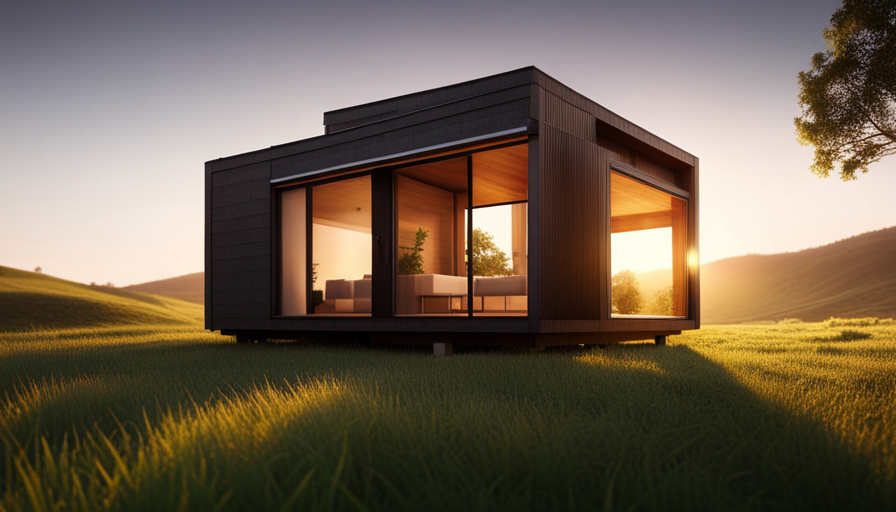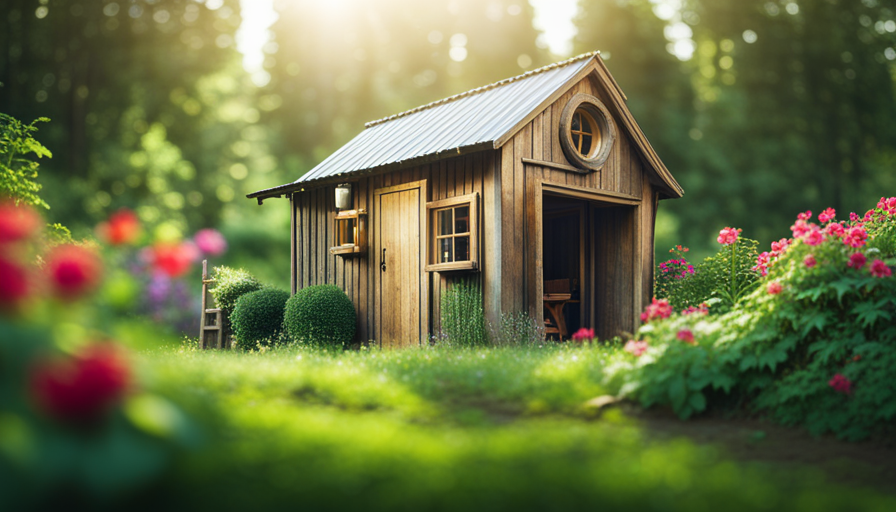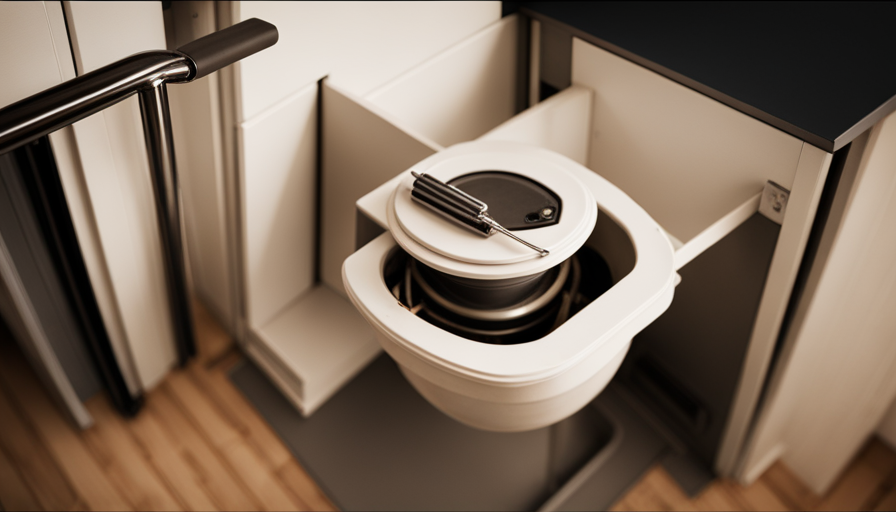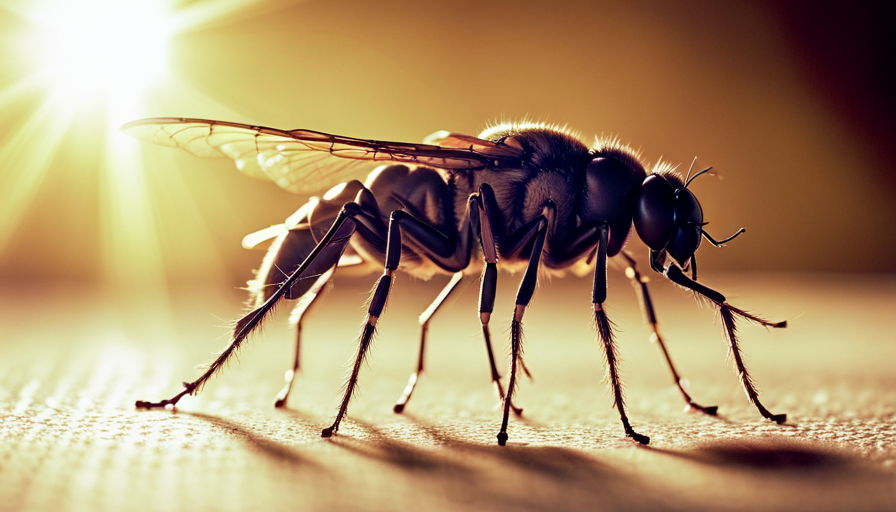Picture this scenario: a charming small house nestled in the countryside, surrounded by the beauty of nature. But this isn’t your typical home. It’s actually a tiny house, a cozy living area that has captured the hearts and imagination of many individuals.
But what if I told you that you could have this dreamy abode without breaking the bank? Yes, it’s possible to spend as little as possible on a tiny house, and in this article, I’ll show you how.
We’ll explore the factors that influence the cost of a tiny house, from building techniques to finding affordable land. We’ll also delve into financing options, maintenance and utility costs, and insurance and legal considerations. Plus, we’ll take a look at real-life stories and examples of budget-friendly tiny houses.
So, if you’re ready to embark on an adventure of minimalist living, join me as we uncover the secrets of how little one can spend on a tiny house.
Key Takeaways
- Factors that influence the cost of a tiny house include building techniques, land prices, financing options, and maintenance and utility costs.
- Budget-friendly building techniques and materials, such as using recycled or salvaged materials, can significantly reduce costs.
- Space-saving solutions, such as multifunctional furniture and maximizing vertical space, can make the most of limited space in a tiny house.
- Finding affordable land for a tiny house can be achieved by looking for remote locations with lower land prices, understanding zoning regulations, considering leasing land, or joining a tiny house community.
Factors That Influence the Cost of a Tiny House
To truly understand the factors that influence the cost of a tiny house, you must consider the various elements that can significantly impact the overall price.
One of the main factors is the choice of budget-friendly building techniques. Opting for simple construction methods and materials can greatly reduce the cost of a tiny house. For example, using recycled or salvaged materials not only cuts down on expenses but also adds a unique touch to the design.
Additionally, considering affordable tiny house designs can have a substantial impact on the final cost. By choosing a layout that maximizes space efficiency and minimizes unnecessary features, you can create a functional and comfortable living space without breaking the bank.
Another factor to consider is whether to build or buy a tiny house. Building your own tiny house allows for customization and can potentially save money on labor costs. However, it requires more time, effort, and skill. On the other hand, buying a pre-built tiny house may be a quicker and more convenient option, but it can be more expensive. Ultimately, the decision between building and buying depends on individual preferences, skills, and budget.
Transitioning into the subsequent section about building vs buying a tiny house, it is important to weigh the pros and cons of each option before making a decision.
Building vs Buying a Tiny House
When considering a tiny home, it’s worth exploring the options of constructing or purchasing.
DIY construction allows for complete customization and the satisfaction of building something with your own hands. It also offers the potential for cost savings, as you can source materials and labor at more affordable rates. However, building a tiny house requires significant time, effort, and construction skills.
On the other hand, buying a pre-built tiny house offers convenience and a quicker move-in time. You can choose from a variety of designs and layouts that suit your needs. While purchasing a pre-built tiny house may be more expensive upfront, it saves you from the hassle of construction and potential mistakes.
It’s important to weigh the pros and cons of both options based on your budget, time constraints, and construction abilities.
In the subsequent section about ‘budget-friendly building materials and techniques,’ we will explore ways to minimize costs while constructing a tiny house without compromising quality.
Budget-Friendly Building Materials and Techniques
When it comes to building a tiny house on a budget, there are several key points to consider.
First, using recycled and reclaimed materials can be a cost-effective option that also helps reduce waste.
Second, deciding whether to take on the project as a DIY or hiring professionals can greatly impact the overall cost.
Lastly, incorporating creative space-saving solutions can maximize the use of every square inch in a tiny house.
These factors are crucial to consider when aiming to build a budget-friendly tiny house.
Using Recycled and Reclaimed Materials
Using recycled and reclaimed materials adds a touch of charm and nostalgia to your tiny house, creating a cozy and eco-friendly space. Here are four reasons why incorporating recycled building materials and DIY construction techniques can be a cost-effective choice for your tiny house project:
-
Cost savings: By using recycled materials, you can significantly reduce your budget as these materials are often cheaper or even free.
-
Environmental benefits: Choosing to repurpose materials helps reduce waste and minimizes the demand for new resources, making your tiny house more environmentally friendly.
-
Unique character: Recycled materials bring a distinct character and personality to your tiny house, giving it a one-of-a-kind charm that can’t be replicated with new materials.
-
Creative expression: Working with reclaimed materials allows you to unleash your creativity and showcase your DIY skills, giving your tiny house a personal touch.
By using recycled materials and embracing DIY construction techniques, you can save money while creating a unique and environmentally conscious tiny house.
Now, let’s explore the next section about the advantages and disadvantages of DIY versus hiring professionals.
DIY vs Hiring Professionals
Hiring professionals for your tiny house project can be a wise decision, but DIY construction allows you to put your personal touch on every aspect of your home.
While hiring professionals ensures expertise and saves you from DIY challenges, it comes with a higher cost. Professionals have the knowledge and experience to navigate any obstacles that may arise during construction, ensuring a smooth process.
However, opting for DIY can significantly reduce expenses, as you can source and reuse materials at a fraction of the cost. On the other hand, hiring professionals may be beneficial if you lack construction skills or have limited time. DIY construction requires a significant time commitment, as you will be responsible for every step of the process.
Moving forward to creative space-saving solutions, it is essential to consider how to maximize every inch of your tiny house.
Creative Space-Saving Solutions
To truly maximize your small living space, get creative with space-saving solutions that’ll make every inch of your tiny abode feel functional and stylish.
Here are four space-saving solutions to consider:
-
Space-saving furniture: Look for multifunctional pieces like sleeper sofas, folding tables, and wall-mounted desks. These can provide both storage and functionality without taking up much space.
-
Maximize vertical space: Utilize wall shelves, hanging organizers, and built-in storage to make use of vertical space. This’ll help keep your floors clear and create a more open and spacious feeling in your tiny house.
-
Use hidden storage: Look for furniture with hidden compartments or choose storage solutions that can be tucked away under beds or stairs. This’ll help keep your belongings organized and out of sight.
-
Think modular: Opt for modular furniture that can be easily rearranged or expanded to fit your changing needs. This flexibility allows you to make the most of your limited space.
By incorporating these space-saving solutions, you can create a functional and stylish living space within your tiny house. As you plan your small living adventure, another important consideration is finding affordable land for your tiny house. [Transition sentence]
Finding Affordable Land for Your Tiny House
Land for your tiny house can be as elusive as a unicorn on a budget, but fear not, for there are ways to find affordable plots of land. One option is to look for remote locations. These areas tend to have lower land prices compared to urban or suburban areas. By venturing off the beaten path, you may stumble upon hidden gems that are both affordable and peaceful.
However, before purchasing any land, it’s crucial to research and understand the zoning regulations in the area. Zoning laws vary from place to place, and some areas may have restrictions on the size or type of structures allowed. Make sure the land you choose is zoned for residential use and allows for the construction of a tiny house. This will save you from potential legal complications down the road.
In addition to remote locations, consider unconventional options such as leasing land from private owners or joining a tiny house community. These alternatives can provide affordable land solutions while also offering a sense of community and shared resources.
Finding affordable land for your tiny house requires patience, research, and creativity. By exploring remote locations and understanding zoning regulations, you can find a plot of land that suits your needs and budget. Once you’ve secured your land, the next step is to explore financing options for your tiny house.
Financing Options for Tiny Houses
If you’re ready to make your tiny house dreams a reality, there are various financing options available to help you secure the funds you need. Tiny house financing options have become increasingly popular as the demand for these unique living spaces continues to grow.
One option is to obtain a traditional mortgage, although it may be challenging to find a lender willing to finance a tiny house. Another option is to explore personal loans, which can be used to cover the costs of building or purchasing a tiny house. Additionally, some companies offer specialized tiny house loans that are specifically designed to meet the needs of tiny house enthusiasts. These loans often have flexible terms and lower interest rates compared to traditional loans.
Other creative financing solutions include crowdfunding campaigns, where individuals can raise funds from friends, family, and even strangers who believe in their tiny house project. Overall, it’s important to research and explore different financing options to find the one that best fits your needs and financial situation.
Transitioning into the subsequent section about cost-saving tips for furnishing and decorating a tiny house, it’s essential to consider these tips to make the most of your space and budget.
Cost-Saving Tips for Furnishing and Decorating a Tiny House
Decorating a diminutive dwelling with thrifty tactics can be both delightful and doable. When it comes to furnishing and decorating a tiny house, there are plenty of cost-saving tips to consider.
One way to save money is by exploring furniture alternatives. Instead of investing in traditional bulky furniture, opt for multi-purpose pieces that can serve multiple functions. For example, a futon can double as a sofa during the day and a bed at night.
Another cost-effective decor idea is to repurpose items you already have. Transforming old crates into shelves or using mason jars as vases can add a touch of charm without breaking the bank.
In addition to furniture alternatives, consider utilizing space-saving storage solutions. Vertical storage can make a significant difference in a tiny house, so invest in wall-mounted shelves, hooks, and hanging organizers. This will help maximize the available space and keep your tiny house clutter-free.
When it comes to decor, opt for minimalist and functional pieces. Choose neutral colors and simple designs that can create an illusion of openness and airiness in your tiny abode. Incorporate natural elements such as plants or woven baskets to add warmth and texture to the space.
Decorating a tiny house on a budget is possible with the right approach. By considering furniture alternatives, utilizing space-saving storage solutions, and opting for minimalist decor, you can create a cozy and stylish home without breaking the bank.
Transitioning into the subsequent section about the maintenance and utility costs of tiny houses…
Maintenance and Utility Costs of Tiny Houses
To keep your cozy abode running smoothly, you’ll want to consider the maintenance and utility costs of your tiny house.
Maintaining a tiny house requires regular upkeep to ensure its longevity and functionality. This includes tasks such as cleaning the exterior and interior, checking for any leaks or damages, and repairing or replacing any worn-out components. By staying proactive with maintenance, you can prevent costly repairs down the line.
When it comes to utility costs, one of the main advantages of a tiny house is its energy efficiency. With a smaller space to heat or cool, you can significantly reduce your utility bills. Additionally, incorporating energy-saving appliances and using natural lighting can further reduce your energy consumption. Installing solar panels is another popular option for generating renewable energy and reducing utility costs in the long run.
Transitioning into the subsequent section about insurance and legal considerations for tiny houses, it’s important to note that maintaining your tiny house and reducing utility costs are just a few aspects to consider. Another crucial factor is ensuring that your tiny house is properly insured and complies with local regulations. By addressing these insurance and legal considerations, you can protect your investment and enjoy your cozy abode without any worries.
Insurance and Legal Considerations for Tiny Houses
Ensuring the proper insurance and compliance with local regulations for your tiny house is absolutely crucial, as it protects your investment and allows you to enjoy your cozy abode without any unnecessary worries. When it comes to insurance considerations for tiny houses, there are a few key points to keep in mind:
-
Specialized Insurance: Traditional homeowner’s insurance may not cover tiny houses, so it’s important to find an insurance provider that offers specialized coverage for this unique type of dwelling. This will help protect your tiny house against potential damages or losses.
-
Liability Coverage: It’s important to have liability coverage in case someone gets injured while on your property. This will provide financial protection and cover legal expenses if you’re found responsible for any accidents.
-
Legal Requirements: Each state and municipality has its own regulations regarding tiny houses. It’s essential to understand and comply with these legal requirements, such as zoning and building codes, to avoid any legal issues or fines.
Considering these insurance considerations and legal requirements will provide peace of mind and protect your investment in your tiny house.
Now, let’s explore the community and social aspects of tiny house living.
Community and Social Aspects of Tiny House Living
When it comes to tiny house living, there are several important community and social aspects to consider.
One key point is the option of joining or creating a tiny house community, which can provide a sense of belonging and support.
Additionally, sharing resources and building relationships with fellow tiny house dwellers can help alleviate some of the challenges that come with living in a small space.
Lastly, participating in tiny house events and workshops can offer opportunities to learn and connect with others who share a passion for alternative living arrangements.
Joining or Creating Tiny House Communities
Joining or creating tiny house communities allows individuals to not only save money on housing expenses but also fosters a sense of belonging and promotes sustainable living practices.
By joining communities, individuals can share the costs of land, utilities, and maintenance, significantly reducing their overall expenses. Additionally, being part of a community provides a support system where members can help each other out with various tasks, such as construction, gardening, or even childcare.
This sense of community support creates a strong bond among members and enhances the overall living experience. Furthermore, living in a tiny house community encourages sustainable living practices, such as shared resources and the use of renewable energy sources.
By sharing resources and building relationships within these communities, individuals can further reduce their environmental impact and create a more sustainable future.
Sharing Resources and Building Relationships
Joining or creating tiny house communities isn’t just about finding a place to park your tiny house. It’s also about building relationships and sharing resources. This is where the sharing economy really comes into play.
In a tiny house community, neighbors can share tools, appliances, and even land for gardening. This not only reduces the cost of living but also promotes sustainable living by minimizing waste and maximizing efficiency.
Additionally, building relationships within the community can lead to opportunities for collaboration, such as group bulk purchases or shared maintenance tasks. By participating in a sharing economy and embracing sustainable living, tiny house enthusiasts can create a supportive and eco-friendly community.
Transitioning into participating in tiny house events and workshops, there are even more ways to connect and learn from fellow tiny house enthusiasts.
Participating in Tiny House Events and Workshops
Attending tiny house events and workshops offers a chance to dive deep into the world of compact living and connect with like-minded individuals. Participating in tiny house events provides an opportunity to learn from experts in the field, gaining valuable insights into the practicalities and challenges of living in a tiny house.
These events often feature workshops on topics such as design, construction, and sustainable living, giving attendees a chance to enhance their knowledge and skills. Additionally, these gatherings provide a platform for networking and building relationships with others who share a passion for tiny homes.
By attending these events and workshops, one can gather inspiration and ideas for creating their own budget-friendly tiny house.
Transitioning into the subsequent section, real-life stories and examples of budget-friendly tiny houses showcase the creativity and resourcefulness of those who’ve successfully built their own compact dwellings.
Real-Life Stories and Examples of Budget-Friendly Tiny Houses
Looking for real-life examples of tiny houses on a budget? Here are three inspiring stories that showcase budget-friendly designs and cost-saving construction techniques.
-
The DIY Dream: Meet Sarah, who built her own tiny house for just $10,000. She scoured salvage yards and thrift stores for materials, used recycled wood pallets for flooring, and repurposed old windows. Sarah’s resourcefulness and creativity allowed her to create a cozy and stylish home without breaking the bank.
-
The Tiny Trailer: John and Lisa opted for a trailer-based tiny house, which saved them money on land costs and foundation construction. They found a used trailer for $2,500 and built their tiny house on top of it. By using lightweight materials and minimizing square footage, they were able to create a comfortable living space for under $20,000.
-
The Tiny Conversion: Mark and Emily transformed an old shipping container into their dream tiny house. By repurposing the container, they saved money on materials and construction time. With some clever design choices and budget-friendly finishes, they were able to create a modern and functional home for around $30,000.
These real-life examples prove that with a little creativity and resourcefulness, it’s possible to build a budget-friendly tiny house without sacrificing style or comfort.
Frequently Asked Questions
Are tiny houses legally recognized as permanent homes?
Legally, tiny houses face challenges in being recognized as permanent homes due to legality concerns and zoning restrictions. However, there are ways to navigate these obstacles.
It’s important to research local regulations and obtain necessary permits. Some areas have specific guidelines for tiny houses, such as minimum square footage requirements or designated zones. By adhering to these rules, individuals can increase the chances of their tiny house being recognized as a permanent dwelling.
Do I need to have a specific type of insurance for my tiny house?
I don’t need to have a specific type of insurance for my tiny house, but it’s highly recommended to have tiny house insurance. Tiny house insurance provides coverage for potential risks such as theft, fire, and natural disasters.
The insurance requirements for a tiny house may vary depending on factors such as the size, location, and intended use of the house. It’s important to consult with an insurance provider to ensure that you have the appropriate coverage for your tiny house.
How do I find a community that allows tiny house living?
Finding tiny house communities can be a thrilling yet daunting task. The pros of tiny house living include minimalism and a sense of community. However, it’s important to consider the cons as well, such as limited space and potential zoning restrictions.
To find these communities, I recommend joining online forums and social media groups dedicated to tiny house living. Additionally, attending tiny house festivals and workshops can provide valuable connections and insights into potential communities.
What are some common challenges of living in a tiny house?
Living in a tiny house has its pros and cons. While it offers a minimalist lifestyle and financial freedom, there are challenges to consider.
Limited space can be a struggle, requiring careful organization and decluttering. Privacy and personal space may also be compromised.
However, there are tips and tricks to make tiny house living more comfortable. Utilizing multi-purpose furniture, maximizing storage, and embracing a minimalist mindset can help overcome these challenges and create a cozy, functional living space.
Can I build a tiny house on wheels and still find affordable land to park it on?
Finding affordable land to park a tiny house on wheels can be challenging due to zoning regulations. However, it is possible to find affordable options if you do thorough research.
According to a study, the average cost of renting a spot for a tiny house on wheels is around $500 per month. It’s important to consider local regulations and restrictions, as they vary greatly from one area to another, which can affect the affordability and availability of suitable land.
Conclusion
In conclusion, building and living in a tiny house can be an affordable and fulfilling lifestyle choice. By carefully considering factors such as building materials, land options, and financing, it’s possible to keep the costs of a tiny house to a minimum.
Remember the old adage, ‘Less is more,’ and embrace the simplicity and freedom that comes with living in a small space. With the right planning and mindset, anyone can achieve their dream of owning a budget-friendly tiny house.
Hi, I’m Emma. I’m the Editor in Chief of Tiny House 43, a blog all about tiny houses. While tree houses are often associated with childhood, they can be the perfect adult retreat. They offer a cozy space to relax and unwind, surrounded by nature. And since they’re typically built on stilts or raised platforms, they offer stunning views that traditional homes simply can’t match. If you’re looking for a unique and romantic getaway, a tree house tiny house might just be the perfect option.










